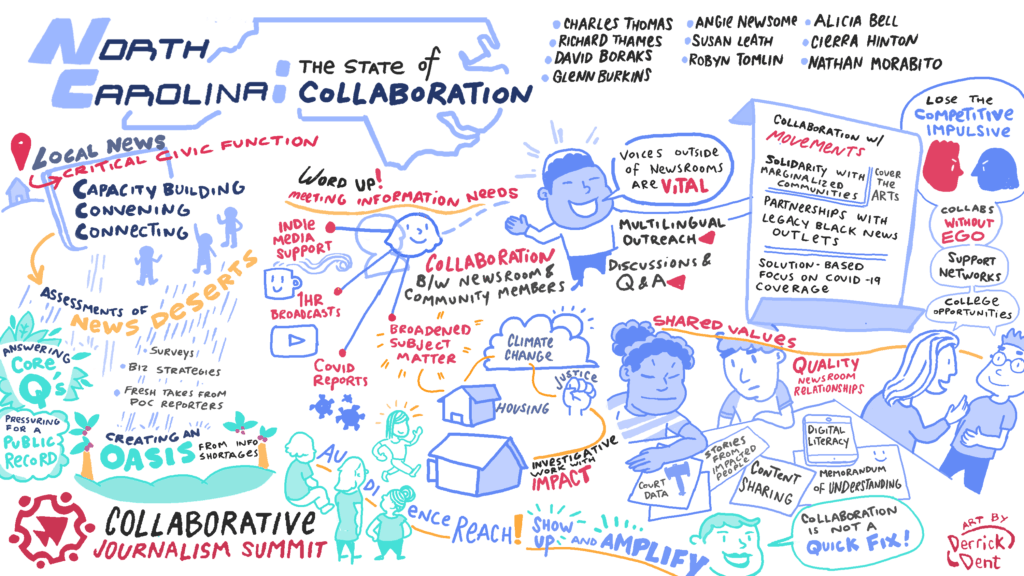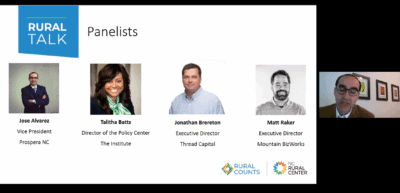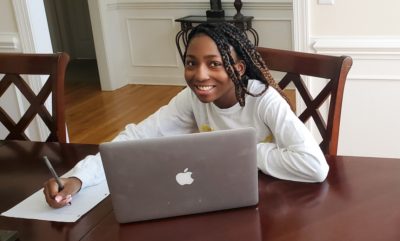After studying journalism and working for my campus newspaper for the last three years, I’ve perfected my response to people who ask why I want to go into this field. They always say journalism is dying or I won’t find a job, and I always have the same reply: in our democracy, journalism will never really die — it will just change form.
After tuning in to the virtual Collaborative Journalism Summit hosted by the Center for Cooperative Media last week and seeing how organizations across the country are working together, I realized that we’re in the midst of one of those transitions, just not in the way one might think.
It’s no secret that the journalism industry is rapidly changing. The story of the last two decades has been one of uncertainty as newsrooms shifted from print to digital and shrunk in the process.
Another simultaneous shift, however, is less obvious but encouraging at the same time. It’s a recognition that we, both reporters and our audiences, are in this together.
“You can’t create a future of journalism that works for all people without talking to and working with all kinds of people,” said Alicia Bell, the News Voices organizing manager at Free Press. “So it’s important that we bring in the voices of non-journalists who are just as impacted by the future of journalism as journalists are.”
Bell’s work centers around including audiences, especially marginalized ones, in the reporting process. This can come in the form of using audience interaction to guide reporting, or by letting them speak for themselves, like with EdNC’s reader-submitted perspectives articles. The summit celebrated this community-centered engagement because it not only benefits audiences by making content more relevant and intentional, but it helps newsrooms in the search for sustainability.


That’s where the second part comes in: collaboration between newsrooms. North Carolina is lucky to benefit from a lot of them, with initiatives like the Charlotte Journalism Collaborative and even here at EdNC, where other publications have permission to republish any of our articles, a benefit for organizations with limited education reporting resources. Our state’s news ecosystem is full of opportunities for reporters to pool their resources to make a better end product.
But this wasn’t a norm even just a decade ago, and it’s as much about survival as it is accountability to audiences. Robyn Tomlin, executive editor for the Raleigh News & Observer and the Durham Herald-Sun, put it best when she said, “We’re in a place where we really can’t afford to have big egos that keep us from finding ways to work together.”
While the industry’s competitive mentality hasn’t entirely gone away, we can’t afford to work in silos anymore. As quality news is clamoring for attention alongside everything else, newsrooms have been forced to return to their communities all while trying to bring in new voices. That’s a good thing.
College newsrooms are also increasingly working together for many of the same reasons. My campus newspaper, The Daily Tar Heel, has partnered with the Duke Chronicle to produce a rivalry edition for the last two years. Of course at the end of the day we’re still loyal to our own schools, but who says we can’t make a highly anticipated event more exciting while helping our newsrooms at the same time?
For this growing mentality to continue permeating the industry, I hope it can be emphasized more within journalism classrooms. The industry changes so rapidly that it can be difficult for a curriculum to keep up, but engagement should be at the core of everything journalists do starting in school. The more students are given these tools, the more we can help as we enter professional newsrooms.
These collaborations aren’t a miracle cure for the industry’s woes, and they don’t fit every situation. But their spirit and the growing emphasis on community engagement give me hope. As long as journalists keep talking to each other and to our communities, I can’t wait to see what form we take next.




